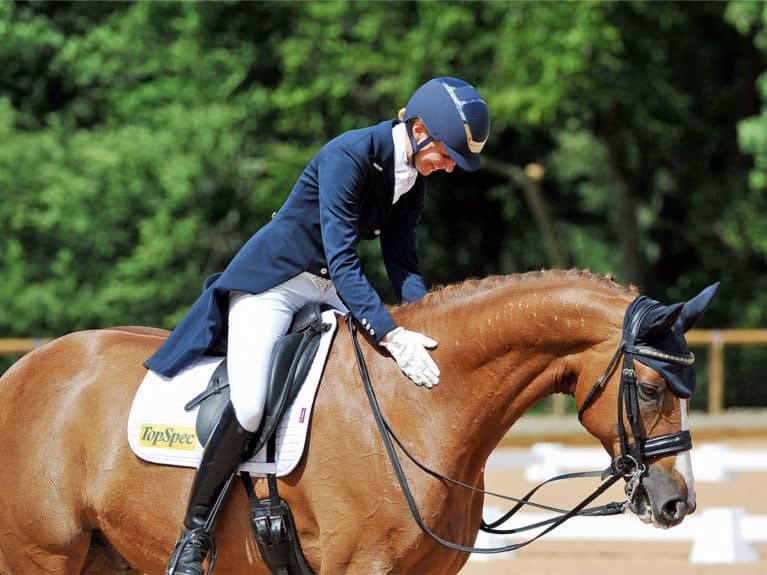How to Organize Ordering Hay and Feed for Horses
With temperatures dropping, the summer's warmth now feels like a distant memory. The change from summer to autumn and winter management is often the trickiest to manage for horse owners, particularly for those with horses who do not hold their condition well.

Many owners have been left with poor quality pastures following a hot, dry summer. With this in mind, care should be taken to ensure condition is maintained going into and throughout the winter months. The difficulty of this task is increased by the potential for high prices and reduced availability of this season's hay due to a light early cut followed by a dry summer.
Forage
Fibre, in the form of fresh grass or conserved forage (hay and haylage), should usually be the foundation of your horse's diet. Adequate provision of conserved forage is important in winter when grass quality drops off.When nutrients from forage are fully utilised, it lowers the requirement for additional hard feed.
Ad-lib provision of early-cut ryegrass hay or haylage is ideal for hard-working horses who need to gain, and maintain, condition. However, if your horse needs a diet that's low in sugar for other reasons, such as being prone to laminitis, gastric ulcers or fizzy behaviour, then adequate provision of a late-cut meadow hay is a more suitable choice. However, that is unlikely to be possible this year.
To help your horse maintain an ideal weight over the winter, make sure his teeth are functioning efficiently, which means the'll be able to chew his hay/haylage effectively. Six-monthly or annual dental checks, dependent on age and dental condition, by a qualified equine dental technician or vet are advisable.
An elderly horse suffering with dental issues may benefit from substitutinghay and haylage with a dried, soft, short-chopped grass. If even this is a struggle, a soft, hydrating high-fibre mash or soaked good-quality fibre cubes are ideal for providing additional fibre over the winter months, or indeed all year round, and, in exceptional circumstances, can be used as a complete hay replacer.
Feed utilisation
In order for your horse to utilise his hard feed efficiently, meal sizes should be kept small. For example, a horse with a body weight of 500kg shouldn't have more than 2kg feed (dry weight) per meal. Exceeding this is counter-productive, as the feed is forced through the stomach and digestive system too quickly, reducing digestive efficiency.
If extra condition is needed and meal sizes are already at a maximum, it may be necessary to feed up to 3-4 times a day. This can be a good solution for a poor-doer needing larger quantities of hard feed.
Hard feed
A nutrient-dense, top-specification, conditioning feed balancer is an ideal base for a hard feed ration as it'll enable your horse to utilise his diet more efficiently, meaning he'll get more benefit from both forage and additional hard feed.
The best balancers will supply amino acids, which link together to make protein, vitamins, minerals and pre- and probiotics. A top-specification conditioning feed balancer will include very high-quality protein sources that supply essential amino acids. These help to promote muscle development and topline when your horse is worked in the correct outline.

Yeast probiotics and mannan oligosaccharides (prebiotics) promote fibre-digesting bacteria in the hindgut. The pure, protected yeast used also improves fibredigestibility, helping to maximise the utilisation of forage.
Where additional calories are needed for condition, a suitable conditioning blend in the form of cubes, mashes or flakes, or straights such as cooked, flaked barley, can be added to the feed balancer where appropriate.
If your horse requires a diet that's low in sugar and starch, maybe because he can be fizzy or has PPID, then a high-quality, cereal grain-free, low-sugar and starch, conditioning cube is appropriate to add to a suitable conditioning feed balancer.
Any horses prone to gastric ulcers will benefit from a specialist cube that contains beneficial ingredients, such as high levels of beta-glucans, pectin and long-acting acid buffers that last for up to six hours.
For horses needing condition and who are able to tolerate higher levels of starch, an extremely nutrient-dense, flaked blend can help to promote condition when combined with an appropriate conditioning feed balancer. The nutrient-rich flakes are ideal to add in a situation where meal sizes are already close to their maximum.
In addition to this, if necessary, to further increase calorie content, oils such as linseed or soya may be added to feeds in order to provide an exceptionally concentrated source of calories. Again, this is particularly useful where meal sizes are large.
Article supplied by nutritionists from the TopSpec Multiple Award-Winning-Helpline. They can be contacted, free of charge, on 01845 565030.
dinardocasere1951.blogspot.com
Source: https://www.horseandrideruk.com/expert-advice/articles/feeding-help-maintain-condition/
0 Response to "How to Organize Ordering Hay and Feed for Horses"
Post a Comment